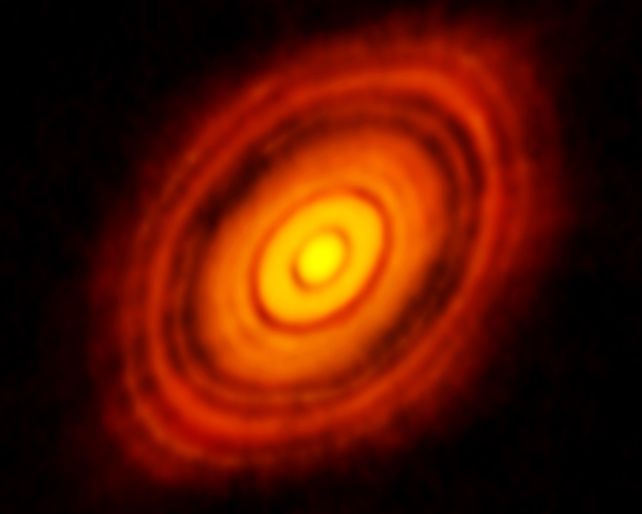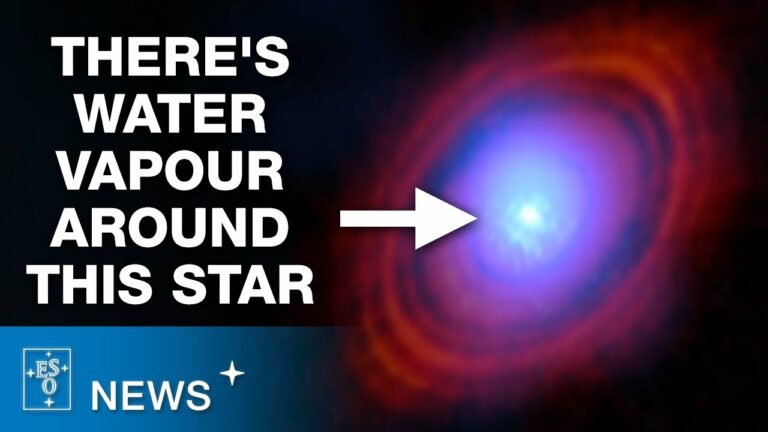Successfully mapping the presence of water exactly in the regions where planets are anticipated to take shape.
Astronomers have achieved a groundbreaking feat in the field of science by successfully mapping the presence of water exactly in the regions where planets are anticipated to take shape.
A fascinating discovery has emerged, shedding new light on the origins of Earth’s water. Recent observations of a dust and gas disk encircling a young star have unveiled a significant presence of water vapor precisely in the vicinity where nascent planets may be taking shape.
This marks the first instance in which astronomers have successfully mapped the distribution of water within a planet-forming disk surrounding a star that could potentially support life.
“Our latest images divulge a substantial amount of water vapor spanning various distances from the star, including a gap where a planet could potentially be forming at this very moment,” explains Stefano Facchini, an astronomer from the University of Milan.
“I never fathomed that we would be able to capture an image of vast oceans of water vapor in the same region where a planet is likely undergoing formation.”
The origin of Earth’s water has long remained an enigma. Some studies propose that a significant portion of our planet’s water was delivered by comets and asteroids. Conversely, others contend that Earth was endowed with its water from its inception, without any contribution from celestial bombardment. Yet, there are those who suggest that a combination of both mechanisms played a role.

We are unable to reverse time and observe, but we can examine other planetary systems in the midst of formation to gain insight into the process. One such system that is aiding us in this endeavor is HL Tauri, a young star resembling our Sun, located just 450 light-years away from our Solar System.
Stars are born within dense clouds of gas and dust. A highly compacted region within this material collapses under the force of gravity and begins to rotate. As it spins, the surrounding material organizes itself into a disk that encircles the developing star, providing it with mass. This can be visualized as water swirling around a drain.
Once the star has fully formed, any remaining material that was not consumed begins to clump together, giving rise to the various components of a planetary system such as planets, moons, asteroids, and comets. This is the current stage of HL Tauri. It is less than a million years old and is encompassed by a wide, cool, and stable disk.
By examining data collected by the Atacama Large Millimeter/submillimeter Array (ALMA), astronomers have observed that the disk surrounding HL Tauri contains concentric gaps. These gaps are believed to be created by the formation of planets, as they sweep up material while orbiting the star.
Due to its proximity, favorable angle of observation, similarity to a young Sun, and previous detection of water in the disk, Facchini and his colleagues aimed to conduct a more detailed investigation to determine the precise location of the water. This information serves as a valuable clue regarding its eventual destination.
The star was observed again with ALMA, this time using two different wavelength bands to focus on water vapor. The researchers discovered a significant amount of water in the inner region of the disk, located within 17 astronomical units of the star, which is the area where terrestrial planets such as Earth are anticipated to form. This particular region contains at least 3.7 times more water than all of Earth’s oceans combined.
Furthermore, the water was detected in a well-known gap within the disk. This suggests that there is a high probability of water being integrated into any planets that might be emerging in that area.
A recent investigation revealed that water was prevalent in the Solar System even before the formation of Earth. The initial map illustrating the spatial distribution of water in a protoplanetary disk indicates that Earth could have originated with a substantial portion of its water, despite some being delivered later through asteroid impacts.
“Our findings demonstrate how the presence of water could impact the evolution of a planetary system,” Facchini explains, “similar to what occurred around 4.5 billion years ago in our own Solar System.”
The research has been published in Nature Astronomy.
Do not forget to share your opinion with us to provide you with the best posts !




0 Comments